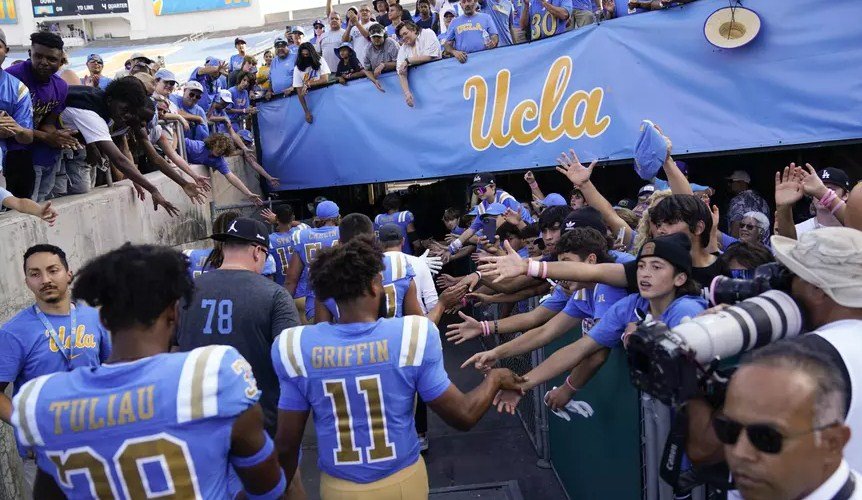The college football landscape is undergoing a major transformation as several schools are changing their conference affiliations in 2023. The move has sparked a lot of controversy and criticism from fans, coaches, and administrators who fear the loss of tradition, rivalry, and regional identity. Some even call it a ‘tragedy’ for the sport.
The Big 12 loses its flagship programs
The biggest shocker of the conference realignment was the announcement that Oklahoma and Texas, the two most successful and influential programs in the Big 12, would leave the conference and join the Southeastern Conference (SEC) in 2024. The move was motivated by the desire to increase their revenue and exposure in the most powerful and lucrative conference in college football. However, it also left the Big 12 in a precarious position, as it lost its status as a Power Five conference and faced the risk of dissolution.
The remaining eight schools in the Big 12 scrambled to find new partners and secure their future. They eventually decided to invite four schools from the American Athletic Conference (AAC): BYU, Cincinnati, Houston, and UCF. These schools accepted the invitation and will join the Big 12 in 2023. The Big 12 hopes that these additions will help them maintain their competitiveness and relevance in the college football landscape.
The AAC raids Conference USA
The AAC was not happy with losing four of its members to the Big 12. The conference felt that it deserved to be considered as a Power Five conference, as it had produced several top-ranked teams and competed well against other major conferences. The AAC decided to expand its membership and raid Conference USA, which was already struggling financially and competitively.
The AAC invited six schools from Conference USA: Charlotte, FAU, North Texas, Rice, UAB, and UTSA. These schools accepted the invitation and will join the AAC in 2023. The AAC believes that these additions will enhance its geographic footprint, market size, and academic reputation. The AAC also hopes that these moves will improve its chances of getting an automatic bid to the College Football Playoff, which is expected to expand from four to 12 teams in the near future.
The impact on college football
The conference realignment has created a lot of chaos and uncertainty for college football fans, players, and coaches. Many are unhappy with the changes, as they feel that they are driven by money and greed rather than by tradition and competition. Some of the consequences of the realignment are:
- The loss of historic rivalries: Some of the oldest and most intense rivalries in college football will be disrupted or discontinued by the realignment. For example, Oklahoma and Texas will no longer play against their longtime foes in the Big 12, such as Oklahoma State, Baylor, TCU, and Texas Tech. Similarly, BYU will no longer face its regional rivals in the Mountain West, such as Utah, Boise State, and Air Force.
- The increase of travel costs and distances: The realignment will also affect the travel arrangements and expenses for the schools and their fans. For example, USC and UCLA will have to travel across the country to play against their new opponents in the Big Ten, such as Ohio State, Michigan, and Penn State. Likewise, Rice and UAB will have to travel far away from their home states to play against their new foes in the AAC, such as Temple, Navy, and East Carolina.
- The imbalance of power and resources: The realignment will also create a wider gap between the haves and have-nots in college football. The SEC will become even more dominant and wealthy with the addition of Oklahoma and Texas, while the Big 12 will become weaker and poorer with their departure. The AAC will also gain an edge over Conference USA, which will lose half of its members and struggle to survive.
Many college football fans are dismayed by these changes and feel that they are ruining the sport. They argue that conference realignment is destroying the tradition, rivalry, and regional identity that make college football unique and exciting. They also worry that conference realignment is creating a monopoly for a few elite programs and conferences at the expense of others.
Some critics have called for a reform of college football governance and structure to prevent further chaos and instability. They suggest that college football should adopt a model similar to European soccer leagues, where teams are grouped based on performance rather than geography or affiliation. They also propose that college football should create a more transparent and fair system for revenue distribution and playoff selection.
However, others have defended conference realignment as a necessary and inevitable evolution of college football. They contend that conference realignment is driven by market forces and consumer demand rather than by greed or selfishness. They also claim that conference realignment is beneficial for college football as it creates more opportunities for exposure, competition, and innovation.

